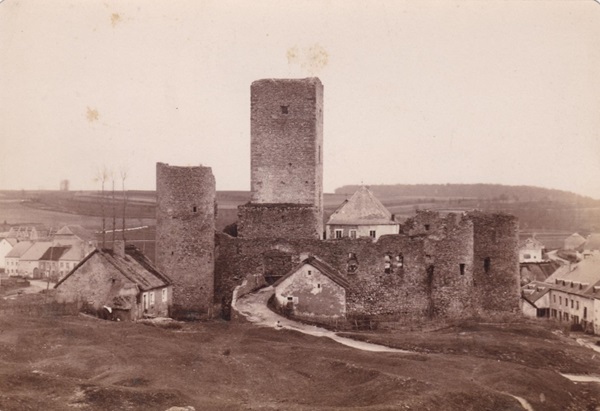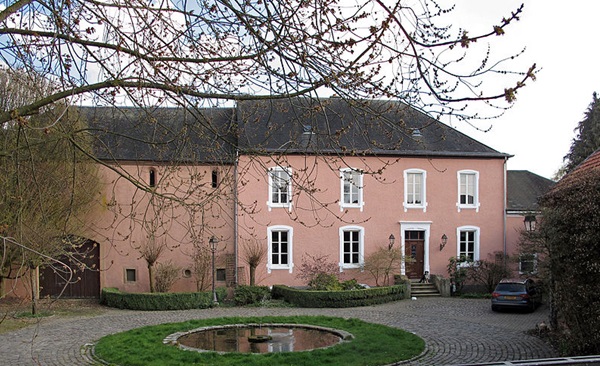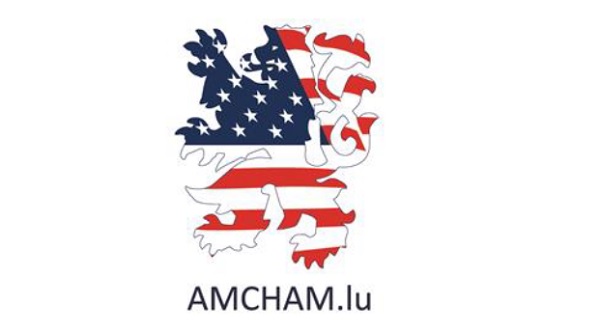 Castle in Useldange before 1886;
Credit: Archive A. Waltzing
Castle in Useldange before 1886;
Credit: Archive A. Waltzing
Chronicle.lu has teamed up with Luxembourg's National Institute for Archaeological Research (Institut national de recherches archéologiques - INRA) for a series of articles on archaeological digs and discoveries around the Grand Duchy.
The series explores digs spanning from prehistoric to Roman and medieval times, highlighting key finds and what they reveal about Luxembourg’s past. It also sheds light on the work of the INRA and its approach to archaeological and historical research.
The latest article in this series looks at the exceptional historical and archaeological site of Useldange.
Useldange is known for its huge castle situated at the confluence of the Schwebach and Attert rivers. Based on the most recent findings, radiocarbon (C-14) analyses date the earliest postholes and sill beam trenches on the strategically located rocky spur to around 800 AD. The earliest construction phase consisted of a modest fortification, comprising a small castle with a wooden tower. This first tower, which corresponds to the current imposing keep, was erected atop a natural elevation of the rocky promontory. Ceramic finds uncovered during archaeological excavations provide evidence of an early settlement at the site, predating even the construction of Siegfried’s “Lucilinburhuc” castle on the Bock promontory.
However, it is not only the castle that holds Useldange’s hidden treasures: one can discover the remains of an old priory in a barn located on Rue de Boevange. The foundation of the monastic community can be situated due to an ancient charter in the beginning of the 12th century. Theobald of Useldange and his wife Azeka donated a church located near the castle to the Abbey of Molesme, located in Burgundy in today's France. The presence of the Benedictine monks in Useldange during this period remains unique for the region.
During the High Middle Ages, the monks built a church dedicated to Saint Mary, whose original size can only be estimated today. The large construction may have been a three-aisled basilica.
Currently, there are still some gothic arches and pillars of the central nave preserved in the basement of the residential building and its built-on barn.
In May 2020, archaeologists carried out a diagnostic survey next to the place where the monks’ presumed dwellings were located. A total of eight trenches were excavated and disclosed the remains of several walls and foundations. This made it possible to distinguish two historical periods, even though the site was heavily developed and disturbed. A part of a 13th-century stove heater was also discovered.
In 2023, Dr Thomas Lutgen conducted a thorough building survey on the historical remaining buildings of the former priory. The survey provides detailed insights into the building’s history. Dr Lutgen has been able to identify eight major remodelling and renovation periods in the areas of the former church. The oldest identifiable parts of the monastery church date from the Romanesque period of the 12th century. The interior was unplastered and without any further decoration. The church was built on a predecessor building, confirming the hypothesis of an older settlement area in this place.
The proven importance of the so-called “Rodenburg”, a ruined castle near the site, allows archaeologists to place this object in the context of the construction of the Useldange priory. A written document from the 17th century provides evidence of an early dual power in Useldange.
The priory was abandoned in the early modern period. The church was later transformed into a manor house with a large barn. The monks’ residences were demolished.
All these recent studies confirm the importance of this monument as a significant part of the region’s cultural heritage. There is no doubt that the enigmatic historical past of Useldange still holds some hidden secrets.

(Recent photo of the manor house and the barn in which the church of the priory was located; Credit: WIKIMEDIA)








